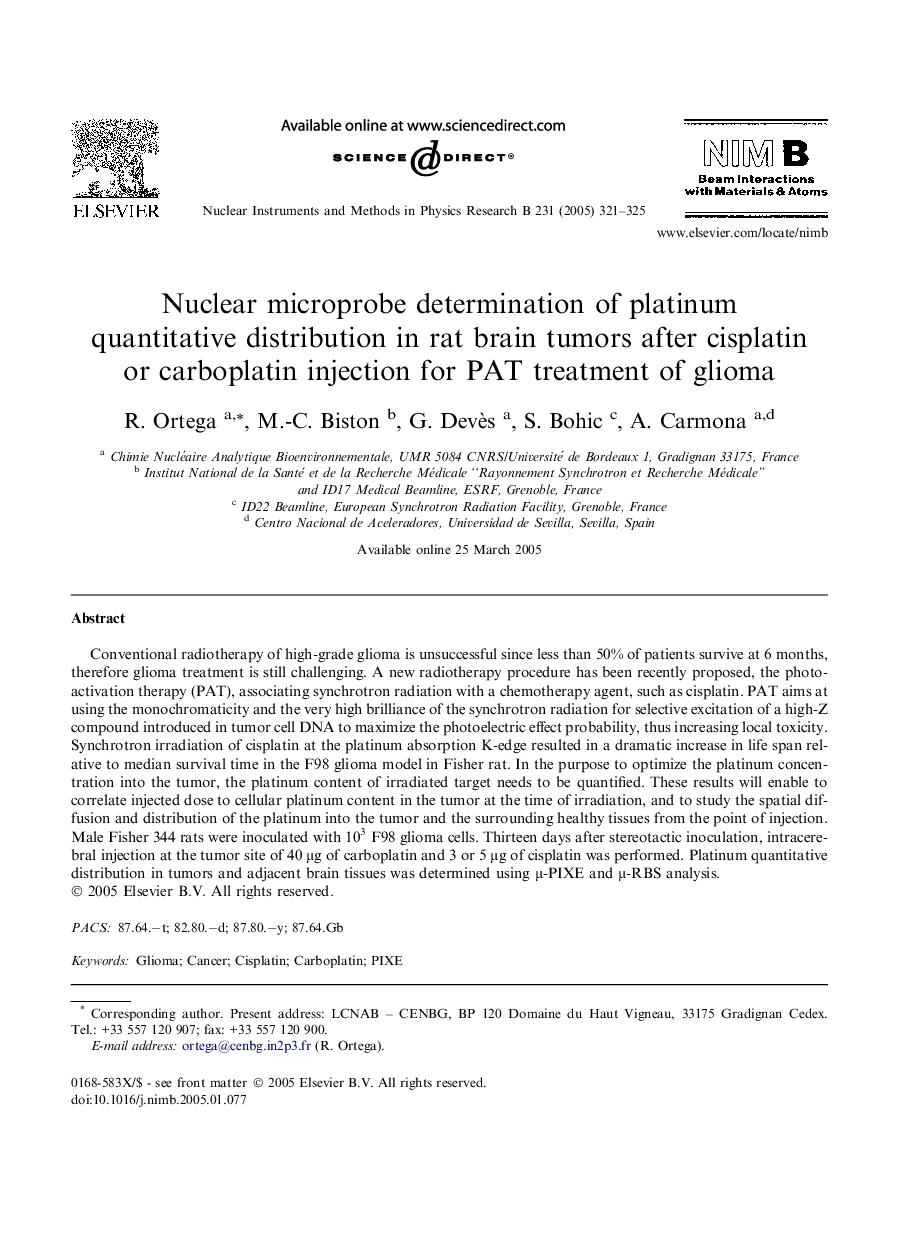| Article ID | Journal | Published Year | Pages | File Type |
|---|---|---|---|---|
| 9818199 | Nuclear Instruments and Methods in Physics Research Section B: Beam Interactions with Materials and Atoms | 2005 | 5 Pages |
Abstract
Conventional radiotherapy of high-grade glioma is unsuccessful since less than 50% of patients survive at 6 months, therefore glioma treatment is still challenging. A new radiotherapy procedure has been recently proposed, the photoactivation therapy (PAT), associating synchrotron radiation with a chemotherapy agent, such as cisplatin. PAT aims at using the monochromaticity and the very high brilliance of the synchrotron radiation for selective excitation of a high-Z compound introduced in tumor cell DNA to maximize the photoelectric effect probability, thus increasing local toxicity. Synchrotron irradiation of cisplatin at the platinum absorption K-edge resulted in a dramatic increase in life span relative to median survival time in the F98 glioma model in Fisher rat. In the purpose to optimize the platinum concentration into the tumor, the platinum content of irradiated target needs to be quantified. These results will enable to correlate injected dose to cellular platinum content in the tumor at the time of irradiation, and to study the spatial diffusion and distribution of the platinum into the tumor and the surrounding healthy tissues from the point of injection. Male Fisher 344 rats were inoculated with 103 F98 glioma cells. Thirteen days after stereotactic inoculation, intracerebral injection at the tumor site of 40 μg of carboplatin and 3 or 5 μg of cisplatin was performed. Platinum quantitative distribution in tumors and adjacent brain tissues was determined using μ-PIXE and μ-RBS analysis.
Related Topics
Physical Sciences and Engineering
Materials Science
Surfaces, Coatings and Films
Authors
R. Ortega, M.-C. Biston, G. Devès, S. Bohic, A. Carmona,
